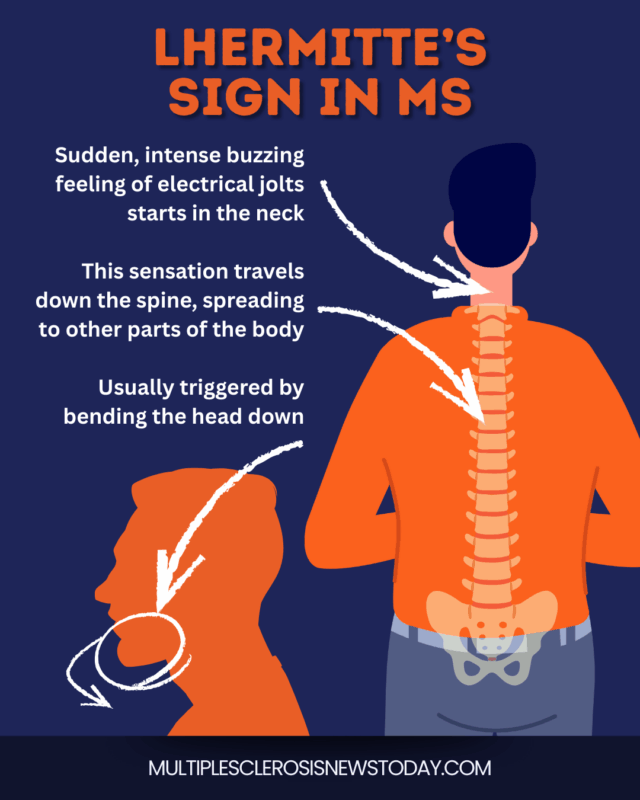
FAQs about Lhermitte's sign
There is no laboratory or clinical test to assess Lhermitte’s sign, an abnormal physical sensation common in multiple sclerosis that’s described as a feeling like an electric shock in the neck. Usually, a physical examination and medical history, with a patient describing such sensations, is sufficient for healthcare providers to identify the symptom.
Lhermitte’s sign is considered a form of neuropathic (nerve) pain. However, while some people report feeling actual pain from the buzzing or “electrical shock” sensation that characterizes the condition, for others it just feels odd and not actually painful. It is rare for Lhermitte’s sign to cause severe pain and discomfort, though it can happen.
People may find Lhermitte’s sign to be painful or annoying, but the symptom itself is not dangerous or life-threatening. No serious health complications have been associated with Lhermitte’s sign.
Like other paroxysmal symptoms — those that appear suddenly, last for a few seconds or minutes, and then disappear — Lhermitte’s sign may come and go as time goes on. For most people, the symptom resolves on its own in time.
Yes. While Lhermitte’s sign is common in people with MS and is typically associated with the disease, it also may be caused by a number of other health conditions. Among them are a tumor causing spinal cord compression, a physical injury (especially of the neck), and spinal cord inflammation caused by an infection. Treatment with high-dose chemotherapy, arthritis in the neck, called cervical spondylosis, vitamin B12 deficiency, and transverse myelitis — a condition characterized by spinal cord inflammation — are other health conditions that may cause Lhermitte’s sign.
Related Articles
 Fact-checked by
Fact-checked by 


